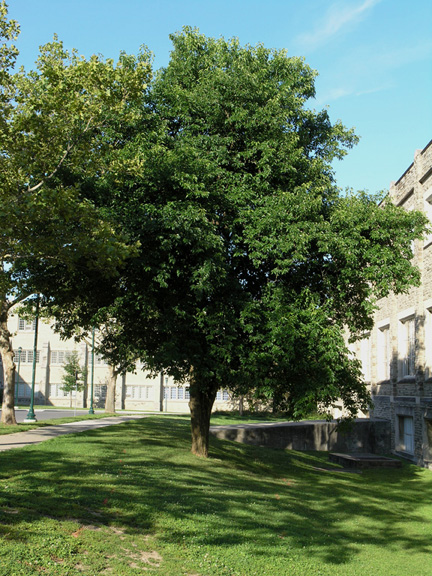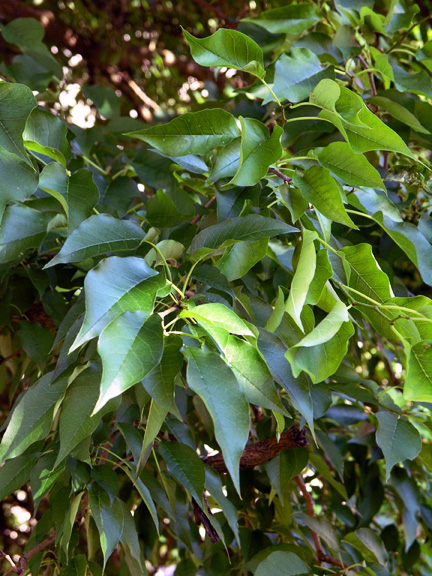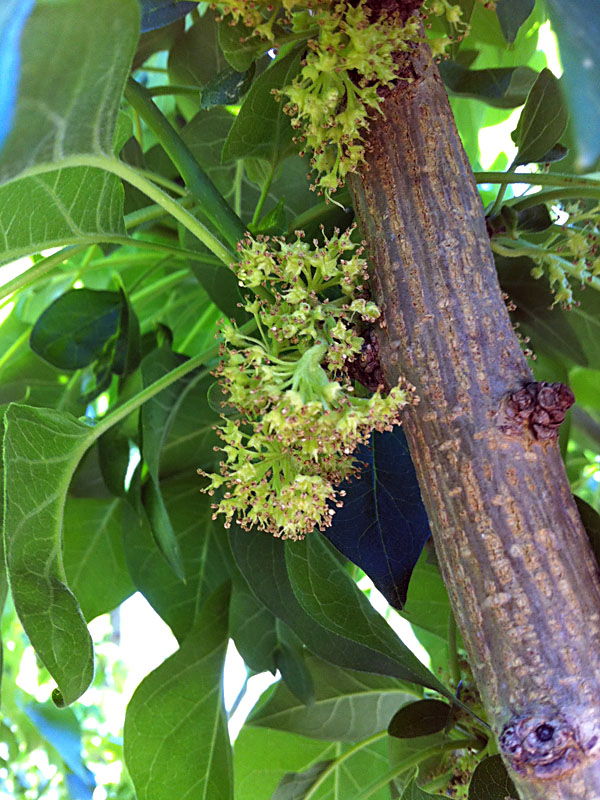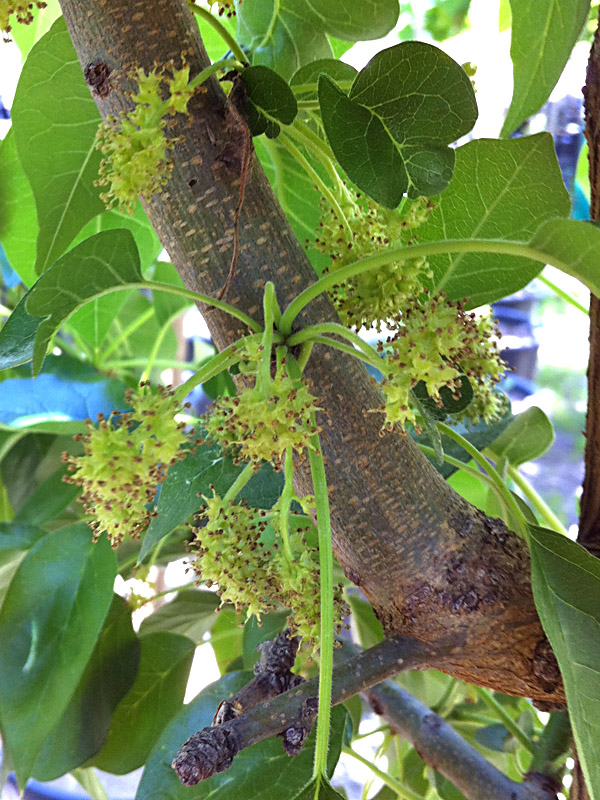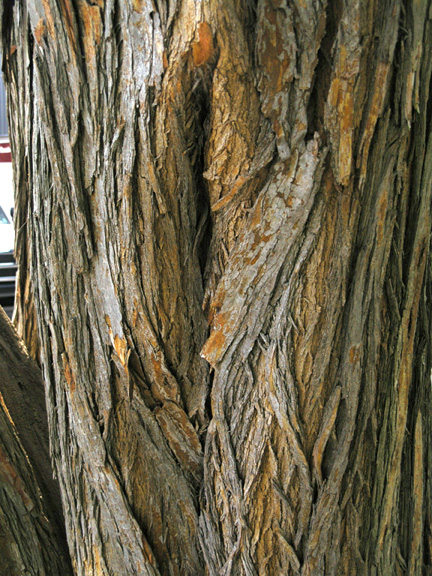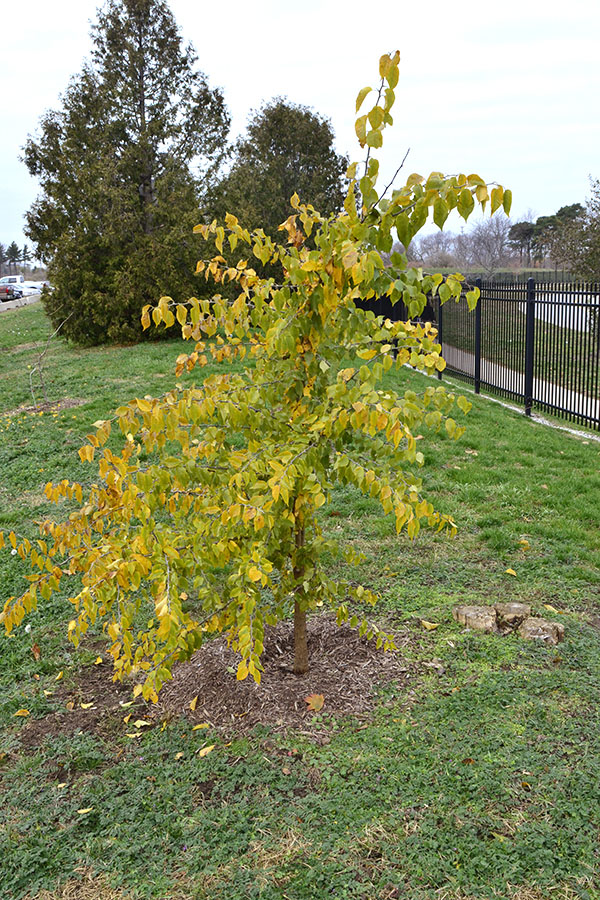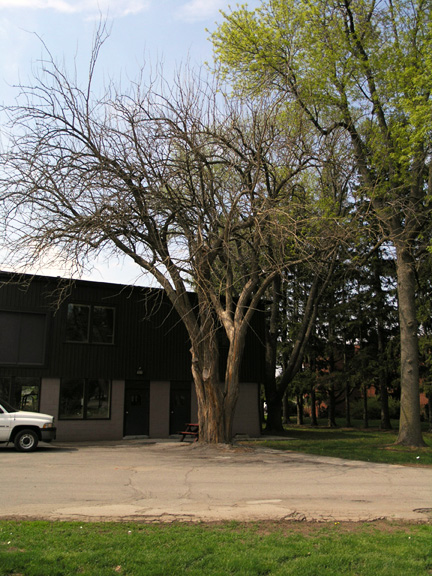
Woody > Maclura > Maclura pomifera > Maclura pomifera
Maclura pomifera
Osage Orange
Mike's
Opinion


"
A native to the mid-United States, M. pomifera is occasionally found in hedgerows in Ontario. Known for its distinctive large green fruit the size of oranges, it is also a relative to the Mulberry. The grey, lightly fissured bark is quite attractive. The yellow autumn colour is quite intense and makes a definite contribution to the landscape. Pollution tolerant it may see some use as an urban tree if male trees are planted.
Michael Pascoe, NDP., ODH., CLT., MSc. (Plant Conservation)
"
| Family |
| Moraceae |
| Genus |
| Maclura |
| Species |
| pomifera |
| Category |
| Woody |
| Type |
| Tree (deciduous) |
| Pronunciation |
| USDA Hardiness Zone |
| 4-9 |
| Canadian Hardiness Zone |
| 4 |
Photographs
Description and Growing Information
Flowering Period
| General Description |
| A deciduous medium-sized tree. Wood is valuable for making bows and is amazingly rot resistant. |
| Landscape |
| Has been used for hedgerows in the plains states, has potential for rugged, polluted areas. |
| Growth |
| Fast |
| ID Characteristic |
| Large yellow-green fruit, inner bark is orange and milky sap appears when spines or leaves are broken off. |
| Pests |
| A few leaf spots have been reported but are not serious. |
| Bark/Stem Description |
| On old trunks, the bark develops ashy brown with irregular longitudinal fissures and scaly ridges. The wood itself is of a characteristic orange colour. |
| Flower/Leaf Bud Description |
| Terminal, small, globular and brown in colour. |
| Leaf Description |
| Simple, ovate to oblong-lanceolate, alternate and are 5 - 12.5 cm long. Glabrous, lustrous bright to dark green and glabrous above. |
| Flower Description |
| Not ornamentally important, bloom in June. |
| Fruit Description |
| A large 7.5 - 30 cm wide globose syncarp of drupes covered with a mamillate rind and yellow-green in colour. |
| Colour Description |
| Leaves are bright, shiny medium to dark green in summer, autumn colour varies from yellow-green to a good yellow. |
| Texture Description |
| Medium in leaf; coarse in fruit and winter. |
| Notable Specimens |
| Ridgetown College, Ridgetown, Ontario, Canada. |
